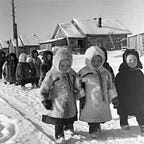Social Distancing in the Bible
“Anyone with such a defiling disease must wear torn clothes, let their hair be unkempt, cover the lower part of their face and cry out, ‘Unclean! Unclean!’ As long as they have the disease, they remain unclean. They must live alone; they must live outside the camp.” (Lev. 13: 45–46)
Social distancing was once a common means of protection against contagious diseases, since Antiquity and through the Middle Ages. The Enlightenment and subsequently modern medical science hoped that proper diagnosis and medical care would effect final cures to previously deadly or uncurable diseases. Social distancing came to be viewed as an inhuman treatment of sick people, who were reclassified as „patients” in the modern hospital system. But the COVID-19 global pandemic has brought social distancing back into practice, on a global scale. It might be interesting to take a look at how social distancing was defined and practiced by the oldest source we have on the practice — the Bible.
Leviticus or the 3rd Book of Moses in the Old Testament contains laws and regulations practiced by the Levites, the priests of the semi-nomadic Jewish tribes. These laws were passed down orally and attributed to Moses the Prophet, before they were written down. Committing them to writing probably happened in the Temple in Jerusalem, after more Jews became sedentiary and agriculturalist. Together with…
